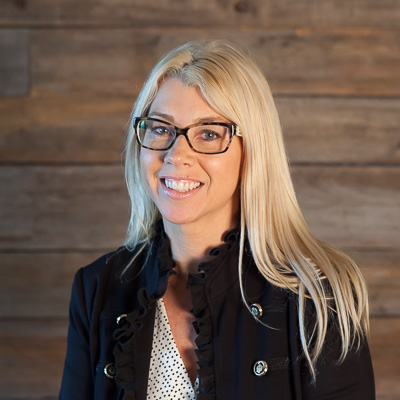Realcomm’s August two-part webinar series, Celebrating Women and the Diverse Voices in CRE, highlighted the talent, thought leadership and unique mindsets that have enhanced commercial and corporate real estate as more women, minorities and diverse thinkers fill executive leadership positions and advanced technology roles as well as facilitate key vendor partnerships. Insights on career paths and navigating challenges In session one, Leadership, Diversity & Evolving Company Cultures, the executive-level women panelists talked about how workplace culture reflects the values of company leadership and can shape employee interactions as well as promote motivation and loyalty. With new voices in the leadership space, the panel discussed changes in leadership modeling, evolving workplace challenges, the critical role that mentorship plays and how companies are attracting new talent. A big theme among the panelists’ stories of their personal journeys was about receiving mentorship and support and becoming a mentor themselves to help other people advance and open up opportunities. Further, working with good leaders taught them how to become good leaders. Another common theme was about advocating for yourself. Hope Dunleavy, enterprise managing consultant at RealFoundations, stressed the importance of reaching out, being authentic and sharing your story while also listening to others’ stories. The panel agreed on the importance of creating community for support — such as joining (or creating) a women’s group in your organization, which Kelly Soljacich, senior vice president of LaSalle Investment Management, recommended. Veronica Unnikrishnan, partner and senior vice president of innovation, sales and marketing at 5Q Partners, commented that choosing the right organization and positions that will lift you up “is where the magic happens” and will help you grow and develop your career. Further advice included choosing the best opportunity over the most money is a wise decision in the long...
ESG Insights
OSCRE Webinar Recap
Are you ready for new ESG regulatory requirements and increasing investor demands? OSCRE Innovation Forum’s recent webinar, Constructing an ESG Framework for the Future, provided expert insight into this critical initiative. Moderated by Lisa Stanley, CEO at OSCRE, the panelists were Dan Winters, Head of Americas at GRESB, The Global ESG Benchmark, Naseem Wenzel, Strategy + Innovation Lead Partner at Cohn Reznick and Daniel Egan, Senior Vice President, Energy and Sustainability at Vornado Realty Trust. Read on for some important takeaways. Top ESG challenges A polling question during the webinar asked participants to identify the top challenge they face for ESG initiatives. 42% cited inconsistent data across platforms, tied with 42% that stated building skills to implement ESG initiatives are the top challenges. In its January e-newsletter, OSCRE responded to the polling results, “Inconsistent data across platforms is not a new phenomenon for organizations…While investment funds report their activities including zero-carbon targets and other environmental impact initiatives through their Annual Reports and GRESB benchmark reports among others, the information that’s reported is gathered at the property level. This need for information confirms common ground — the need for standardized information for property owners, occupiers and investors that inform decisions and provide insight for risk assessment.” Clearly, there’s a need for not only impeccable data from a centralized location (a single source of truth), but also the ability to automatically extract and properly analyze it for meaningful application. This applies to ESG efforts as for all other operational processes. Good corporate governance Organizations must assess where they are today — including the level of responsible corporate leadership, to create a roadmap for where they want to go. Having an “ESG culture” across your business is key, meaning ESG is part of everyone’s job, as is...
Better AP Options
Senior Living Webinar 9/17
Senior living providers have a lot to manage in their communities, including engaging residents, dispensing medical care, interacting with families and meeting compliance obligations. Also, like other businesses, they process a constant stream of invoices for material and service purchases. Executing all the various accounts payable tasks manually is time-consuming. Could this burdensome aspect of senior living management be easier, faster and less prone to error? Yes, says Carmin Tomassi, vice president/controller for Silverado, and in a free Sept. 17 webinar he’ll share tips for better AP execution from the Irvine, Calif.-based provider of memory care assisted living and hospice services. Hosted by Senior Living Foresight and moderated by its publisher, Steve Moran, the 35-minute session will also feature Kim Hensley, manager of procure to pay for Yardi. As a Changemakers participant and Yardi client success story subject, Silverado has already offered insight into the cost, time, accuracy and scalability advantages of automated AP. At one point, for example, Tomassi’s staff wrestled with stacks of invoices in various stages of action, endured lengthy approval and reconciliation processes, and juggled no fewer than 12 different systems. Yardi PayScan scans Silverado’s invoices into electronic transactions and automates approval workflows through vendor payment in a single connected system. The solution helped Silverado cut costs with paperless processing, and it enforces consistent standards, minimizes errors and ensures timely vendor payments. Today, Tomassi says, Silverado has “a level of information that we didn’t have before. Now we can act on that data and do something about it. [PayScan] helped our accounting department improve their processes, like really getting people to pay attention to how they’re coding invoices.” Ready to banish your biggest accounts payable headaches, just like Silverado and many others did? Register for the Sept. 17 webinar. It...
Yardi + AIM
Live webcast Sept. 17
Are you missing live events? While we can’t bring back the hum of the tradeshow floor just yet, we’re excited to team up with AIM to host a live webinar event that we hope will rival some of your favorite speaking sessions from conferences past. Keep reading to see how we’re bringing industry leaders from Bozzuto, KETTLER and The Management Group together on one virtual stage … and why you want to reserve your seat asap. The New Apartment Marketing Playbook: Consumer Behavior Has Shifted, Have You? Thursday, Sept. 17, 11 a.m. PDT Even as the COVID-19 pandemic continues, renters are still on the move. With social distancing measures in place, renters expect to interact with properties in new ways. This increasing demand for virtual and contactless engagement is nothing new. But now that we’ve adapted to a new norm and the virtual conveniences that come with it, there’s no going back. Considering this shift in consumer behavior, here are some questions your property management teams may be facing: Is it possible to create an online experience as powerful as a visit to your properties? How can you offer game-changing online and self-service tools that don’t compromise your security standards? What should your leasing agents be doing to pivot and provide real value in an increasingly virtual world? “Don’t lose customers to your competitors while you’re waiting for things to ‘get back to normal.’ Normal as we knew it is changing. Taking this opportunity to make smart updates to your leasing process will have a lasting positive impact on your business in the months and years ahead,” said Esther Bonardi, session moderator and vice president of marketing at Yardi. During this live online event, you will learn how to: Convert more renters by creating authentic experiences onlineLease more units by offering a range of tour types to fit every needImprove the prospect experience while prioritizing the safety of your team and propertiesEvolve leasing positions to meet the demands of the new customer experience Speakers include: Jamin Harkness, Executive Vice President, The Management GroupKelley Shannon, Senior Vice President, Marketing & Customer Engagement, BozzutoDaryl Smith, Senior Vice President & Chief Marketing Officer, KETTLER Free ebook Webinar registrants will receive a free copy of The New Apartment Tour with their confirmation email. This exclusive ebook details three ways you can modernize different tour types at your properties to convert more renters, both online and in person. Save your seat today to get your...
Student Housing
New product from Yardi Matrix
Already well known in the industry for its dependable, up-to-date and prescient market data, Yardi Matrix will take those skills to school as it begins reporting on the student housing sector. The new research area from Yardi Matrix comes at a particularly opportune time, as student housing owners and investors are navigating an uncertain environment caused by the COVID-19 pandemic. With many colleges and universities still making final decisions about what campus life and enrollment will look like in fall 2020, housing providers are anxious to see how this unprecedented situation will impact revenue streams and investment health. Quarterly Matrix reports focused on the student housing market will be available beginning this summer. Market coverage will include over 2,000 universities and colleges nationwide, including the top 200 investment grade universities across all major collegiate conferences. Reports will also include shadow markets, meaning campus-proximate housing that often is rented by college students, though it may not be categorized as traditional student housing. “We’re looking forward to offering the same comprehensive and future-thinking reporting that we do for the rest of the real estate industry to the student housing sector,” said Jeff Adler, vice president of Yardi Matrix. “We’ve done a deep dive into student housing fundamentals and look forward to sharing our insight with all who are interested.” To that end, the Yardi Matrix team will host a July 15 webinar focused entirely on the student housing market. Attendees can expect to gain insight on the short and long-term impact of COVID-19, best and worst-case scenarios, key indicators for operators and potential areas of opportunity. You can secure your spot in the online session by signing up here. Yardi Matrix offers the industry’s most comprehensive market intelligence tool for investment professionals, equity investors, lenders and property...
Price is Right?
Revenue Management Now
Are you thinking about fine tuning your revenue management program to meet the challenges of COVID-19? The current market is impacting demand and pricing, and it’s time to consider new strategies for managing your assets with both a short- and long-term focus on collections and occupancy. As some states are already planning to open up within phased approach guidelines, Yardi Matrix data shows that demand is bouncing back from an initial drop of about 30% during the first two weeks of March. Plus, move-outs have slowed down. Looking at data collected from 11.5 million apartment units, April collections were better than expected according to the NMHC Rent Payment Tracker which showed 84% of apartment households made full or partial rent payments by April 12 and 91.5% by April 26. While that’s good news, the coming months are a bit unpredictable due to growing unemployment and delays for many people in getting their benefit payments. “It is encouraging that apartment residents continue to meet their rent obligations whether that’s with the support of the federal relief funds, credit cards and alternative, flexible options provided by the industry’s owners and operators,” said NMHC President Doug Bibby. “But their financial security is unclear as many may not qualify for federal relief, while others are drawing down savings and facing greater financial challenges, including higher health care costs. For that reason, lawmakers need to act now to enact a direct renter assistance program.”* One growing trend is undeniable: leasing has shifted online, so be ready to handle more virtual traffic to your properties. Your revenue management strategy should adapt smartly to these changes in demand and interactions. Many initially thought a lockdown on rental pricing increases made sense but could be a knee-jerk reaction. There’s more to...
New Energy Regulations
Prep Help from Yardi
Yardi recently hosted a series of webinars for property owners in the U.S. and Canada facing the prospect of complying with a raft of energy, water and waste benchmarking requirements. A new statewide ordinance in California, measures in a host of municipalities and the Energy & Water Reporting and Benchmarking Regulations (EWRB) in Ontario, Canada, require measurement and public disclosure of whole building energy and/or water efficiency. All told, 49 mandatory policies to leverage ENERY STAR® plus a like number of voluntary policies requiring commercial and multifamily property owners to gather, assimilate and submit data will be on the books next year. Energy experts Randy Moss, Kimmy Seago, Ashley Nelson, Carson Spraker and Ethan Arbiser used the webinar series to illustrate the process and benefits of ENERGY STAR, the industry benchmarking standard that shows how efficiently a building performs compared to other similar buildings. Challenges often associated with benchmarking include managing multiple vendors and data request processes, compiling multiple street addresses into a whole building, obtaining owner and tenant authorizations, ensuring data quality, and properly setting up data and reporting through ENERGY STAR Portfolio Manager®. As an ENERGY STAR partner that has benchmarked 320 million square feet within Portfolio Manager, Yardi has energy management software and certified experts that make collecting, assimilating and reporting required information much easier for building owners. Benchmarking steps include setting up properties in Portfolio Manager, requesting whole building utility data from providers, and verifying and submitting the data. The Yardi team also tracks regulation updates and properties’ compliance status. The webinar presenters pointed out that property managers can use information loaded into ENERGY STAR for purposes beyond compliance. These include earning certifications that exempt properties from audits and recommissioning and gaining access to low-cost green financing. Benchmarking can also help attract investors, many of whom factor ENERGY STAR scores into their investment decisions. Data gathered from benchmarking also helps property managers plan and evaluate future energy conservation measures and compete in internal and external energy-saving competitions. Learn what’s ahead in American and Canadian energy regulations and learn how Yardi, which actively manages ENERGY STAR compliance for more than 2,000 commercial and multifamily properties in many jurisdictions, can help you get...
New Tech Era
Realcomm Webinar
For decades, commercial property managers regarded information technology as a support function, one that was almost always isolated from the strategic direction of the business. Today, with virtually all property stakeholders expecting greater operational control and transparency, relegating IT to a peripheral or firefighting role is no longer an option. The consensus among Yardi’s Dhar Sawh and other experts who participated in a recent Realcomm-hosted webinar holds that IT, as a company’s technology implementation gatekeeper, should command status as a full partner and value generator. Sawh defined the purpose of a technology strategy as satisfying owner and investor expectations for favorable revenue, cost and risk mitigation outcomes. Performing the business operations necessary to achieve them requires visibility into revenue, occupancy and other indicators that spans the organization. That, in turn, requires connected solutions that unify people and resources, from vendors and employees all the way up to investors, in a common vision. He also pointed out that extracting cost and revenue benefits from current operations, rather than actively pursuing new yields, is the most reliable generator of investor returns late in an economic expansion cycle such as the current one. IT drives those results with technology that’s scaled across the organization and empowers stakeholders with automation and self-service capabilities like online invoice processing, payments and work orders. Another example of technology occupying a place at the core of a business is active sensors that monitor a space and preheat or precool the area before it’s occupied. This allows building owners to avoid charges for utility usage at peak times. “This is an example of integrating technology for the benefit of business objectives,” Sawh said. Once invested as a full partner in the business, IT can create positive experiences for owners and occupants by elevating...
Senior CRM Webinar
Featuring Thrive Senior Living
Roughly 10,000 baby boomers turn 65 each day. It’s a demographic shift of seismic proportions, and it’s spurred a lot of new developments in senior living as investors anticipate future demand. Turns out, they’ve got a few more years to wait before they can recoup their costs (the average senior living resident is well into their 80s before they move in), but these brand-new communities are already having an impact. Namely, increased competition. There are too many extra units for too few interested seniors. It’s driven occupancy rates in the industry down to 87.8% – the lowest levels since 2011, reports the NIC. For senior living providers, it’s a sobering statistic. How can they differentiate themselves from the increasingly crowded pack and draw in new residents? Well, we may not have all the answers, but we’ve got a few proven ideas. Join us on Wednesday, August 28, at 10 a.m. PDT (1 p.m. EDT) for a live panel discussion on how a customer relationship management (CRM) solution for senior living can hone your competitive edge – and ultimately grow your community. We’ll have Richard Nix, senior sales director for Yardi, presenting during the webinar, as well as Nicole Moberg, chief sales officer at Thrive Senior Living. The event will be moderated by Steve Moran from Senior Living Foresight. Learn seven ways you can use a CRM to overcome the recent headwinds in senior living. Plus, you’ll get insights straight from someone who’s done it already. A Yardi client, Nicole has turned her sales and marketing team into a lean, lead-generating tour de force. She’ll share her experience in rolling out Yardi Senior CRM and what steps she took to perfect her team’s approach. Here’s just a few things you’ll learn: What the new senior...
Shifting Spaces
Office Market Update
While industry fundamentals are healthy and the economy is strong, the U.S. office sector faces pressures that could fundamentally alter its business model. Jeff Adler and Jack Kern, vice president and director of institutional research, respectively, for Yardi Matrix, provided an update on a sector in transition in a recent webinar. After a shaky fourth quarter of 2018, the U.S. economy has rebounded into “really good shape,” Adler said, with a rising stock market and inflation that is largely held in check by increased domestic oil production. The labor market is very tight—the best in 50 years, he said—with office-using sectors outpacing overall job and wage growth over the past five years and most markets absorbing available office space. Metros such as Dallas, Houston and Atlanta are growing fast and adding office-using jobs. Other locations with job growth and low unemployment, such as Orlando, Fla., Nashville, Tenn., San Francisco and the nearby Bay Area, have to import workers to meet staffing needs. Most markets still have room to absorb office space. In short, the industry is in a good place, and if the federal government’s pro-growth policies outweigh its anti-growth ones, “the party goes on,” Adler said. So what are the challenges? One of the main secular (long-term) factors is coworking, which pulls 1-3% of market demand from traditional office leases and keeps growing as companies expand beyond their primary locations. The practice is growing everywhere and won’t likely go away anytime soon, Adler said. Per-employee square footage is decreasing, particularly in central business districts and high-cost metros. With a tight labor market, companies are luring talent by making office “an experience-driven sector,” similar to what has happened in retail, incorporating design elements and attractions such as new technology, spaces for relaxation, natural light,...
Pace Setters
Realcomm Tech Forecast
Appropriately for the “acceleration” theme of its global conference this week, Realcomm recently hosted a webinar in which several experts, including Yardi’s Alex Stanton, commented on the rapid pace of change in commercial real estate and new data management technology entering the marketplace. Stanton, regional director of commercial sales, said the movement toward an integrated concept of information management is so profound that it’s altering the very concept of the lease. “Client,” for example, no longer means a single entity but instead a broader category of people to be managed with increasingly granular information. “Space” encompasses coworking, parking and amenities as well as traditional offices. “Tenants” are morphing into “guests” whose service expectations require the collection and management of an expanding body of information including such non-real estate sources as weather and traffic information. Companies are creating digital twins of everything from their buildings to their tenants and the environment surrounding them. The best prescription for managing change, he said, is aligning IT resources with a company’s strategic direction. “When there’s a nice marriage of business and IT, there’s stronger direction and execution on investments, efficiencies and other actions,” Stanton said. Other participants and their thoughts on managing change included: Sam Wong, head of analytics and data science for global real estate manager QuadReal Property Group. When building its data platform from scratch, QuadReal focused on gaining insight and action, not just reporting, and its attention to the information management and database portions of the solution stack equaled that devoted to business intelligence and analytics. “We also sought a platform that could grow in capability and size so we don’t just worry about what we need to do in the next year or so,” said Wong, who managed both the business and technical teams...
Tech at Work
Realcomm Webinar Recap
By 2025, 75 percent of the workforce will be comprised of workers from the Millennial generation. A Thursday webinar hosted by Realcomm: “Technology in the Workplace – Managing the Needs of Multiple Generations” focused on managing that transition successfully and effectively for team members of every generation. Realcomm CEO Jim Young was the moderator. Panelists included: Esther Bonardi, VP of Marketing, Yardi Porschia Parker, Founder, Millennial Performance Institute Shalaya Shipman, Sr. Manager, Operations, SalesForce Kevin Able, President, REALTY|Share Elizabeth Dukes, CMO and Co-Founder, iOffice John Spindler, VP Marketing and Product Management, Zinwave The panelists covered a variety of topics relevant to the escalating generational workforce shift, among them work ideology, preferred methods of recognition, communication platforms and technological expectations. Esther Bonardi, vice president, marketing for Yardi, focused her comments on differentiating the workplace personalities of the Millennials and the Baby Boomers and facilitating constructive communication between the two groups. “I would say to the older generation – reach out and let the younger generation teach you something. Let them know you are willing to learn from them and see what they have to bring to the table. This process starts with the older generation opening up and saying: you mentor me and I’ll mentor you. Let’s teach each other,” Bonardi said. The best way to start such a conversation? Find a neutral subject of interest to both groups, like giving back to the community as a company. “If you’re looking for a place to have these groups where people can exchange information, you might consider corporate social responsibility,” Bonardi suggested. Coming together for the greater good is always a unifying experience that can create professional bonds. Yardi’s workforce in North America is made up of nearly 50 percent Millennial employees, she shared. That has...
Market Forecast
Yardi experts weigh in
Jeff Adler and Jack Kern hosted the semi-annual Yardi Matrix webinar on Thursday, November 10th. More than 300 participants dialed in to hear their data-based assessment of the economy and the multifamily market. Our hosts covered a number of topics from the 2016 presidential election, to job growth and economic fundamentals, to specific markets and submarkets primed for growth in the coming years. .Highlights of the webinar included: Economic Fundamentals: The domestic economy continues to grow at a steady pace, creating new jobs at an average rate between 150,000 and 200,000 per month. Recent GDP growth shows signs of strength as output picked up in the third quarter, yet the economy has cooled slightly compared to prior years. Strong employment and modestly rising wages have supported the American consumer, which in turn has helped bolster the economy. Inflation remains tepid although, as Adler mentioned, there are two sides of the inflation equation. Goods inflation has remained flat and even negative at times, while services inflation, specifically education, rent and healthcare, has been rising significantly. The State of the Multifamily Market: New apartment construction has been a major headline throughout 2016 and Yardi Matrix anticipates roughly 350,000 new units to be completed this year. While 2016 will be the largest year for new supply since the Great Recession, Adler noted that the majority of new supply is being built in only 10 markets across the country. As a result, certain high supply markets such as San Francisco, Houston, and Denver have seen rents decelerate throughout the second half of the year, while rent growth remains above 5% in many markets across the country, especially on the west coast. Demand remains strong and Adler indicated that pent up demand, especially among millennials, should provide a consistent...
Multifamily Investment
Outlook remains positive
This week, Yardi’s Jeff Adler (Vice President of Matrix) and Jack Kern (Director of Research/Publisher of MHN, CPE) presented a biannual webinar on the health and welfare of the U.S. multifamily investment sector. In an hour-long presentation, Adler and Kern summarized the various forces that impact investment, including job growth, oil prices, rent growth and supply. Data is derived from the reports created by Yardi Matrix, the industry’s most comprehensive apartment market intelligence platform. While striking a more cautionary note than six months prior, the outlook for multifamily investment remains very positive, Adler said. Occupancy is high and rent growth strong at 6 percent. “U.S. multifamily is still the place to be (for investors), even if the ride is at risk of a few potential transitory bumps in the road,” he commented. “The only caution I have is that the risk of global, debt driven macroeconomic dislocation, has, in our view, risen.” Concern about unstable economies in China, Japan and Europe, as well as slow growth in GDP at home, prompted the tempering of the outlook. “The US economy is the one eyed man leading the blind. If you look at the Eurozone, performance has been horrific. In Japan, it is a 20 year deflationary deadbeat. China is going through the right kind of transformation, but it’s going to take time and they’ve misallocated a whole bunch of capital,” Adler said. Looking at markets on a regional basis, some slowdown has been noted in previously red hot cities, Adler noted. “There’s deceleration going on in Houston, Denver, and San Francisco, but acceleration in Orlando, Atlanta and Phoenix,” he said. One factor that is influencing growth is what Adler called “intellectual capital nodes,” suburban neighborhoods with an abundance of creative individuals, a supportive business climate, and lifestyle amenities. “These are places where the value of place is most likely to increase,” Adler said. Seattle, Denver and Atlanta are all home to such submarkets. When it comes to supply, new apartment stock is being delivered – about 250,000 new units are in lease-up now, with a half-million under construction. But consumer demand remains high enough to absorb those new units and remain hungry for more. “Occupancies are high and sustainable in the 96 percent range for stabilized property,” Adler said. A big differentiator for apartments these days remains the in-unit washer dryer, he noted. Investors looking to add value to their properties should consider that amenity first as a way to stand out. The next Matrix outlook webinar will be presented in November, 2016. Find the presentation deck from Wednesday’s event here. Visit http://www.yardimatrix.com/ to learn more about the product, reports, and upcoming...














